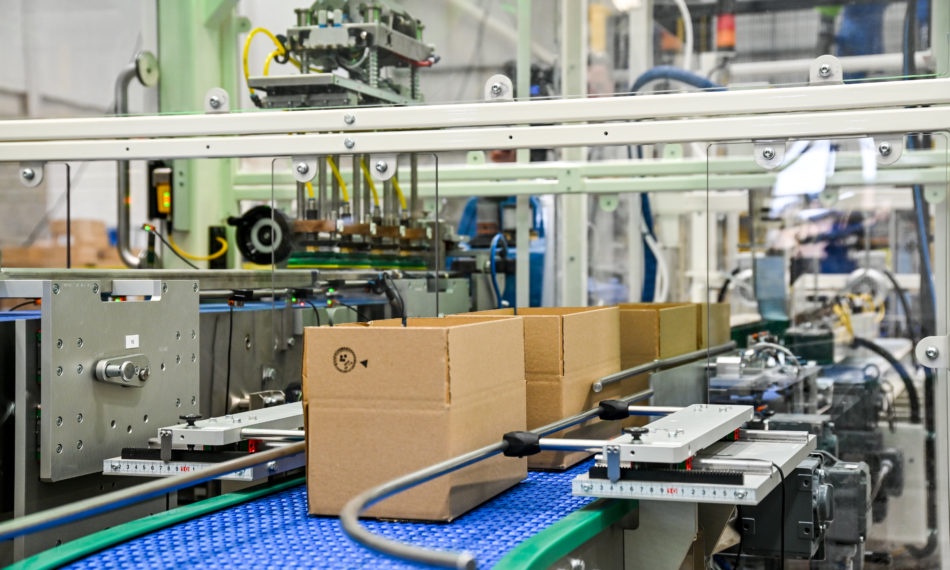In the dynamic world of industrial manufacturing and logistics, efficiency is the key to success. Streamlining processes, reducing costs, and ensuring product integrity are top priorities for businesses operating in this highly competitive environment. One area that plays a crucial role in achieving these goals is industrial packaging. To meet the demands of modern industry, industrial packaging solutions have evolved significantly, and at the forefront of this evolution is automation. In this article, we will explore how industrial packaging automation is transforming the landscape, enhancing efficiency, and delivering significant benefits to businesses.
The Evolution Of Industrial Packaging Solutions
Industrial packaging is not just about putting products in boxes; it encompasses a wide range of activities, from selecting the right packaging materials to ensuring proper labeling, handling, and transportation. Traditionally, much of this work was done manually, leading to several challenges:
Labor-Intensive Processes: Manual packaging processes require a significant workforce, leading to high labor costs and potential human errors.
Inconsistent Quality: Human involvement can result in inconsistencies in packaging quality, potentially compromising product safety and presentation.
Slow Turnaround: Manual processes often lead to slower turnaround times, delaying product delivery to customers.
High Material Waste: Inefficient packaging can result in excessive material waste, contributing to environmental concerns and increased costs.
Recognizing these challenges, the industrial packaging sector has turned to automation as a solution to improve efficiency and address these issues.
The Role Of Industrial Packaging Automation
Industrial packaging automation involves the use of machinery, robotics, and technology to perform various packaging tasks that were traditionally done manually. These tasks may include product sorting, filling, sealing, labeling, palletizing, and more. By incorporating automation into their processes, businesses can achieve several benefits:
Increased Efficiency: Automation significantly speeds up packaging processes, allowing for higher production rates and quicker order fulfillment.
Consistent Quality: Automated systems ensure uniformity in packaging, reducing the risk of errors and product damage.
Labor Savings: With machines handling the majority of tasks, labor costs decrease, and businesses can allocate human resources to more skilled and value-added roles.
Waste Reduction: Precision in packaging leads to reduced material waste, promoting sustainability and cost savings.
Improved Safety: Automation reduces the risk of injuries associated with manual handling and repetitive tasks.
Key Components Of Industrial Packaging Automation
To understand how industrial packaging automation works, let's explore some of its key components:
Packaging Machinery: Automated packaging machines can handle tasks such as filling, sealing, capping, and labeling. These machines are designed to work efficiently and precisely, contributing to consistent results.
Robotics: Robotic systems can automate tasks like palletizing, depalletizing, and handling of products in a warehouse or distribution center.
Conveyor Systems: Conveyor belts and systems are integral to automation, facilitating the movement of products from one stage of the packaging process to another seamlessly.
Vision Systems: Advanced vision systems use cameras and sensors to inspect products for defects, ensuring only quality items are packaged.
Software Integration: Automation systems are often integrated with software that enables process control, data monitoring, and analytics to optimize operations further.
Challenges And Considerations
While industrial packaging automation offers numerous benefits, it's essential to acknowledge the challenges and considerations that businesses may encounter when implementing these solutions:
Initial Investment: The upfront cost of automation equipment and systems can be substantial, requiring careful financial planning.
Integration Complexity: Integrating automation into existing processes may be complex and require specialized expertise.
Maintenance And Training: Automation systems require regular maintenance, and employees need training to operate and troubleshoot them effectively.
Scalability: Businesses should consider how easily their automation solutions can adapt to changes in production volume and product diversity.
Cybersecurity: As automation systems become more connected, cybersecurity becomes a critical concern to protect against potential threats and data breaches.
Conclusion
Industrial packaging solutions have come a long way from manual processes to highly automated systems. Automation not only improves efficiency but also enhances product quality, reduces labor costs, and promotes sustainability. In a competitive industrial landscape, businesses that embrace industrial packaging automation are better positioned to meet the demands of the modern market.
As the industry continues to evolve, it's crucial for businesses to stay informed about the latest automation technologies and trends to remain competitive. Industrial packaging solutions providers, like Ace Packaging Solutions, play a pivotal role in helping businesses maximize their efficiency through automation, ensuring that products are packaged with precision and delivered to customers promptly. By investing in industrial packaging automation, businesses can streamline their operations, reduce costs, and position themselves for long-term success in an ever-changing industrial landscape.


No comments yet